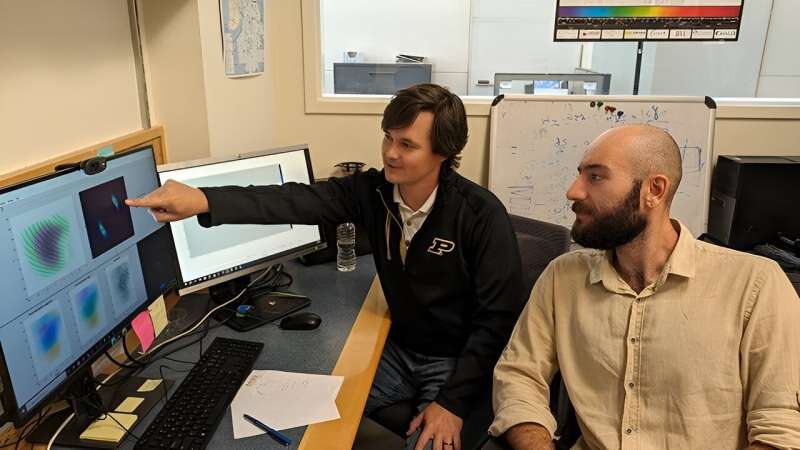This article has been reviewed according to Science X's editorial process and policies. Editors have highlighted the following attributes while ensuring the content's credibility:
fact-checked
trusted source
proofread
Technology using all-optical mechanisms has potential to record actions that last a femtosecond

Imagine an action that occurs within a femtosecond, or one-quadrillionth of a second: atomic transitions, charge transfers and dynamics, biochemical processes. Now imagine being able to record that action so it can be studied in further detail.
Purdue University engineers are developing a patent-pending tool that scientists in academia and industry can use to record those ultrafast actions better than with traditional technology.
Traditional streak cameras and their drawbacks
Traditional electronic-based streak cameras are essential for recording phenomena that last mere picoseconds, or one-trillionth of a second. Scientists developed these cameras by converting light to electrons, then "streaking" them across a detector to form an image, said Colton Fruhling, a postdoctoral researcher at Purdue University's Elmore Family School of Electrical and Computer Engineering.
"Think of the electrons like water coming out of a hose and the detector like dry pavement," Fruhling said. "If a person quickly pulls the hose to the side, the water before the hose moved continues to go straight; the water that comes out during the motion is displaced to the side. In this way, the water that comes out of the hose at different times lands in different positions on the pavement.
"If someone wants to measure something really fast—for example, a person slicing their hand through the water—scientists can look at the pavement where the water didn't hit and measure its length to figure out how fast the hand was moving."
However, traditional electronic-based streak cameras, which use today's fastest electronic circuits, have drawbacks. Fruhling said the biggest is their limited time resolution.
"There are some processes that occur in 100 femtoseconds or less; a femtosecond is one-quadrillionth of a second," Fruhling said. "But today's commercial electronic-based streak cameras can only resolve 600 to 800 femtoseconds. There is a whole world of physics that lasts a femtosecond and even an attosecond, or one-quintillionth of a second, that is undiscovered."
Improving upon traditional streak cameras
Fruhling said Purdue's streak camera uses all-optical mechanisms, which have the potential to speed up the process by 10,000 to 100,000 times. The research was led by Vladimir M. Shalaev, the Bob and Anne Burnett Distinguished Professor of Electrical and Computer Engineering; Alexandra Boltasseva, the Ron and Dotty Garvin Tonjes Distinguished Professor of Electrical and Computer Engineering; and Alexander V. Kildishev, professor in the Elmore Family School of Electrical and Computer Engineering.
The patent-pending Purdue innovation uses materials called epsilon-near-zero materials.
"A secondary light pulse changes their optical properties. This means the method is completely optical and not limited by electronic circuits used in traditional streak cameras," Fruhling said.
"The technology could be utilized by physicists and engineers who want to study ultrafast processes like atomic transitions, by chemists who study charge transfer in reactions, and by biologists who want to study protein folding. It could also be used for companies that want to study the charge dynamics in next-generation computer chips."
Fruhling said the research team has created each component of the device and tested them separately.
"We have shown that the optical properties can be dramatically changed over about 100 femtoseconds," Fruhling said. "From the experimental results, we can simulate the resulting streaking performances to be around five attoseconds, which is 100,000 times faster. These tests have been simulations, and final experiments are being designed."
Provided by Purdue University





















